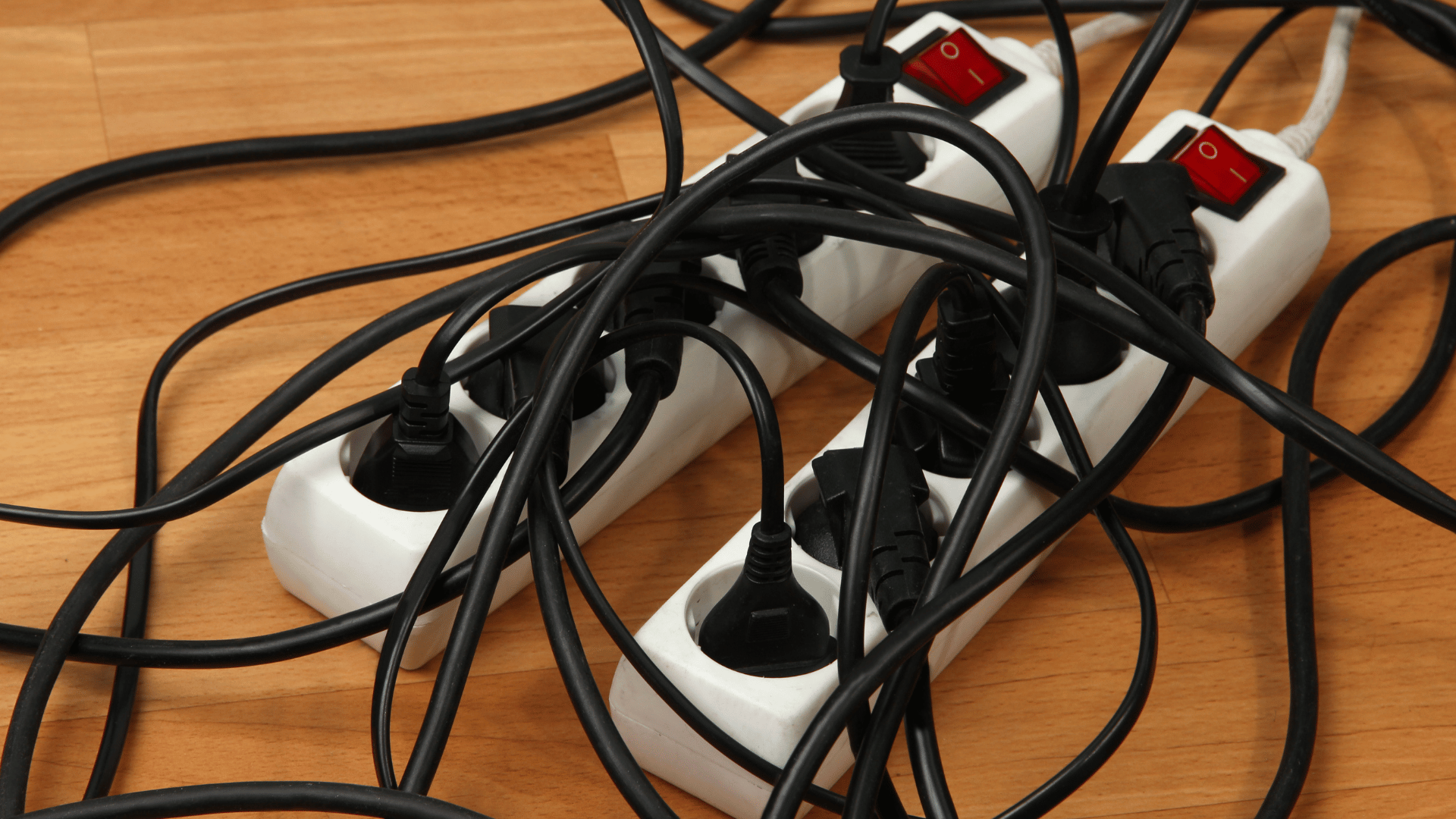Ensuring electrical safety is paramount in any living space, and condos in the Philippines are no exception. With the increased reliance on electrical devices and appliances, it's crucial to implement measures to prevent potential electrical hazards. Here are some specific ways to enhance electrical safety in condominiums:
Regular electrical inspections
To determine the general state of your condo's electrical system, schedule routine inspections by a licensed electrician. This includes checking wiring, outlets, switches, and circuit breakers. Timely inspections can identify potential issues before they escalate into hazards.
Use Certified Electrical Products
When purchasing electrical appliances, gadgets, electrical systems, or even extension cords, choose products with the Philippine Standards (PS) mark or the Import Commodity Clearance (ICC) mark. These certifications ensure that the products comply with safety standards set by the Bureau of Philippine Standards (BPS).
Avoid Overloading Circuits
Condos often have limited electrical outlets, and overloading them with electrical cords can lead to overheating and fires. Be mindful not to daisy-chain multiple appliances using one outlet, and use power strips with built-in surge protection to prevent overloading.
Proper wiring maintenance
Keep an eye on the condition of the wiring and promptly address any wear or damage. Avoid running cords under rugs or carpets, as this can lead to overheating. If you notice flickering lights, frequent tripping of circuit breakers, or other electrical issues, consult a professional electrician immediately.
Ground Fault Circuit Interrupters (GFCIs)
Install GFCIs, especially in areas where power lines are prone to moisture, like kitchens and bathrooms. GFCIs quickly shut off power when they detect a ground fault, preventing electric shock and potential electrocution.
Invest in Voltage Stabilizers
Voltage fluctuations are not uncommon in the Philippines, and they can damage electronic devices. Using voltage stabilizers or surge protectors can help safeguard your electronics from sudden and dangerous voltage spikes.
Educate Residents on Electrical Safety
Promote awareness among condo residents about electrical safety practices. Encourage them not to tamper with electrical fixtures overhead power lines, discourage the use of makeshift wiring solutions, and provide guidelines on proper use of electrical appliances.
Emergency Response Planning
Develop an emergency response plan that includes procedures for electrical incidents. Ensure that residents know how to turn off the main electrical supply and have access to emergency contact numbers for electricians and relevant authorities.
Adequate Ventilation for Electrical Panels
Ensure that electrical panels have proper ventilation to prevent overheating. Avoid placing furniture or other items in front of electrical insulation or around electrical panels, allowing for adequate airflow to maintain the optimal operating temperature.
Emergency Lighting
Install emergency lighting systems, especially in common areas and stairwells. This ensures that residents can safely navigate the premises during power outages or emergencies.
Fire safety equipment
Equip common areas and units with fire extinguishers. To guarantee these devices' efficacy in the event of an electrical fire, inspect and maintain them on a regular basis.
By implementing these electrical safety measures, residents of condos in the Philippines can significantly reduce the risk of electrical hazards, ensuring a secure living environment for everyone. Regular maintenance, awareness of common electrical hazards, and adherence to safety standards are essential components of a comprehensive electrical safety strategy.
Learn about the dangers of working around electrical hazards.
Working around electrical hazards poses significant risks, and understanding these dangers is crucial for the safety of individuals in various professions. Electrical hazards can lead to severe injuries, fatalities, and property damage. Here are some key dangers associated with avoiding electrical hazards and working around electrical hazards:
Electric Shock
Electric shock is one of the most immediate and severe dangers of working with electricity. It occurs when the body becomes part of an electrical circuit, and the severity of the electrical shock depends on factors such as the amount of current, the duration of contact, and the path the current takes through the body. Even low-level shocks can cause muscle contractions, burns, and, in extreme cases, cardiac arrest.
Burns
Electrical burns can result from direct contact with electrical currents or from arcs and flashes. These burns can vary in severity, from superficial burns on the skin to deeper tissue damage. The intense heat generated during an electrical incident can cause severe burns and electrical injuries that may require immediate medical attention.
Electrocution
Electrocution refers to death caused by electric shock. It is a severe consequence of working around electrical hazards and can occur if the electrical current passes through the heart or other vital organs. Proper safety measures around electrical hazards, including the use of personal protective equipment (PPE) and adherence to safety protocols, are essential to prevent electrocution.
Fire Hazards
Electrical incidents can lead to fires, especially in environments with combustible materials. Overloaded circuits, faulty wiring, or electrical equipment malfunctions can spark fires that pose a threat or danger to both life and property.
Explosions
In certain industrial settings, the release of electrical energy can lead to explosions. This can occur in environments where flammable gases or vapors are present and an electrical spark ignites the combustible material.
To mitigate the dangers associated with working around electrical hazards, individuals who operate electrical equipment must receive proper training, use appropriate safety equipment, follow established safety protocols, and stay informed about potential risks. Employers and workers alike play critical roles in creating a safe work environment and preventing electrical accidents.
Never use faulty equipment.
Using faulty equipment poses significant risks and hazards in various settings, including workplaces, homes, and recreational environments. Whether dealing with tools, machinery, electronic devices, or any other equipment, it is crucial to prioritize safety and never use items that show signs of damage or malfunction. Here are key reasons why one should never use faulty equipment:
Risk of Personal Injury:
- Faulty equipment increases the likelihood of accidents and personal injuries. Malfunctions such as unexpected movements, electrical shorts, or structural failures can lead to severe injuries, ranging from cuts and bruises to more critical conditions like fractures or electrocution.
Potential for Workplace Accidents:
- In a work environment, the use of faulty equipment can contribute to workplace accidents. These accidents not only endanger individual employees but can also have broader consequences, affecting productivity, causing downtime, and leading to increased workers' compensation claims.
Increased Likelihood of Equipment Failure:
- Continuing to use faulty equipment raises the risk of complete equipment failure. What may start as a minor issue can escalate, leading to significant breakdowns that may be costly to repair or replace. Regular maintenance and prompt addressing of faults are essential to prevent such failures.
Fire Hazards:
- Faulty electrical equipment, in particular, can pose a serious fire hazard. Damaged wiring, frayed cords, or malfunctioning components can spark electrical fires that can quickly escalate, putting lives and property at risk. Avoiding the use of faulty electrical equipment is critical for fire prevention.
Compromised Productivity:
- Faulty equipment can hinder productivity as it may not perform its intended functions efficiently. In a workplace setting, this can lead to delays, errors, and overall inefficiencies, impacting both individual tasks and the broader workflow.
Legal Consequences:
- Using faulty equipment in a workplace may lead to legal consequences, as it could violate occupational safety and health regulations. Employers have a responsibility to provide a safe working environment, and failure to address and replace faulty equipment may result in legal liabilities.
Damage to surrounding equipment:
- A malfunctioning piece of equipment can cause collateral damage to other nearby equipment. This not only increases repair and replacement costs but also introduces additional risks and complications to the overall operational setup.
Compromised Quality of Output:
- In industries where precision and quality are paramount, using faulty equipment can compromise the quality of the output. This can have ramifications for businesses that rely on consistent and high-quality production standards.
Adverse Environmental Impact:
- Some faulty equipment, particularly if it involves leaks or emissions, can have adverse environmental consequences. This may result in the release of hazardous materials, pollution, or other environmental damage, underscoring the importance of proper equipment maintenance and replacement.
Undermined Trust and Confidence: Using faulty equipment erodes trust and confidence in the reliability and safety of the tools and machinery provided. This can impact morale, employee satisfaction, and the overall perception of the organization's commitment to safety.
To mitigate these risks, it is essential to establish regular equipment inspection and maintenance protocols, promptly address any signs of damage or malfunction, and ensure that employees are trained to recognize and report faulty equipment. Prioritizing health and safety over convenience contributes to a secure and productive environment, fostering a culture where the well-being of individuals and the integrity of equipment are paramount.










